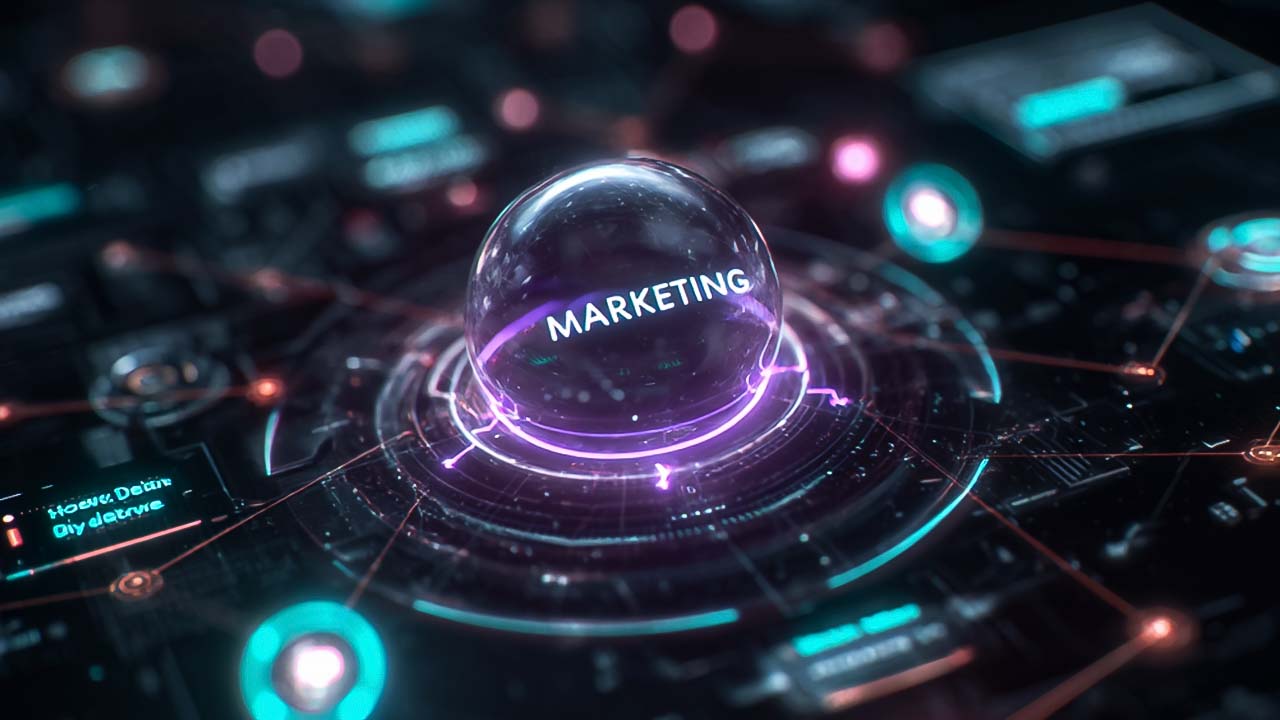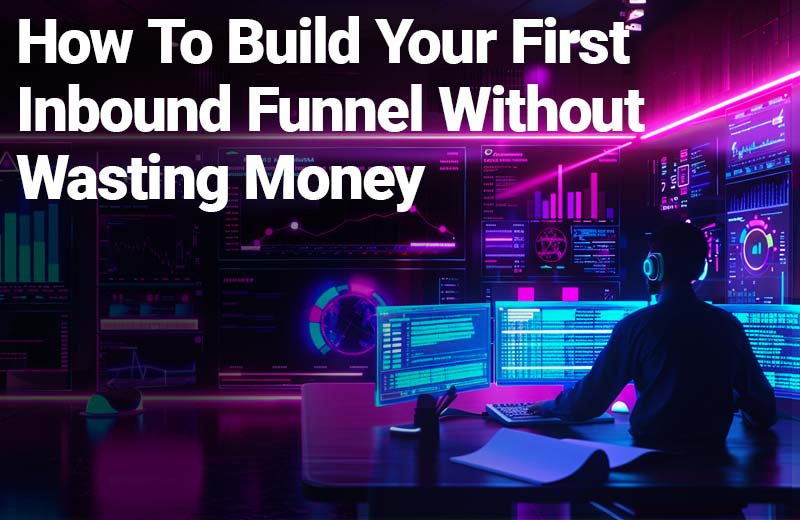What is Marketing?

What Is Marketing? A Complete Guide to How It Actually Drives Business Growth
Marketing has many different faces, but many people never get to see marketing as a whole. They see an ad online and assume marketing is advertising. They hear a sales pitch or a jingle on the radio and think marketing is persuasion. They see a logo and believe marketing is design. When you run a business, these parts will be vital, but they don’t help you understand what marketing actually is or why it matters.
Marketing is not a magical cure-all pill. It is the process of understanding people, shaping value, and communicating that value in ways that build trust, loyalty, and long-term business growth. Every facet of your business will influence your marketing, and that symbiotic relationship will help you grow a solid foundation in your community.
This guide is not just a collection of theoretical knowledge. It's a practical toolkit that equips you with the skills to apply marketing principles effectively in your business, instilling confidence in your marketing endeavors.
Why Understanding Marketing Matters More Than Ever
In today's world, people are bombarded with friends sending TikToks, countless streaming services, and constant notifications; that's all marketing at work. The primary role of marketing is to earn attention. Inbound marketing, which involves creating valuable content that attracts potential customers to your business, and outbound marketing, which includes paid advertising and direct outreach, are two key strategies that can cut through the noise and earn the attention your business needs. Both methods are necessary for optimal growth and are effective in their own right in getting customers' attention.
By understanding who your core audience is and what they care about, you can meet them with clarity, honesty, and relevance. When someone is searching for an answer, scrolling through their feed, or trying to solve a problem, they are not looking for noise. They are looking for a brand that truly understands them.
Marketing begins the moment someone realizes that you see their situation clearly.
To earn attention in a meaningful way, you must answer:
- Who your audience is
- What they are trying to solve
- What beliefs shape their decisions
- What language do they use
- What they expect from brands in your category
When your content and message reflect this understanding, attention becomes something you attract instead of something you chase.
How Marketing Connects to Every Part of a Business
Once you have earned attention, your job is to build interest. People must see how your offer fits their world. At this point in the customer journey, marketing becomes more than promotion. It becomes the bridge across your entire business.
Leadership
Leadership defines the vision and the values. Marketing communicates that vision to the outside world. If leadership lacks clarity, marketing becomes scattered. If marketing misrepresents the vision, the brand becomes inconsistent.
Learn more in the Leadership and Vision Guide. (Coming Soon)
Finance
Finance allocates resources. Marketing depends on budgets, forecasting, and ROI. Without understanding basic financial principles, a marketing strategy cannot scale or optimise responsibly.
Operations
Operations build systems that enable consistent delivery of work. Marketing operations do the same for campaigns, content, analytics, and automation.
Product
Marketing informs product development by revealing customer needs. Product informs marketing by delivering something worth communicating. When these systems collaborate, the product naturally fits the market.
Explore more in the Product and Offer Development Guide. (Coming Soon)
Service
Marketing sets expectations. Service fulfills them. Strong service increases retention and generates referrals. That outcome lowers acquisition costs over time.
Learn more in the Customer Experience and Service Guide. (Coming Soon)
Sales
Marketing creates interest. Sales converts that interest. When both functions are aligned, the customer journey, which is the process a potential customer goes through from first becoming aware of your brand to purchasing your product or service, feels natural and honest.
Brand Strategy
Brand strategy defines perception, messaging, and identity. It decides how your business is remembered. Without it, marketing becomes unfocused and forgettable.
Read the Brand Identity Guide. (Coming Soon)
Graphic Design
Design expresses your strategy visually. Strong design improves clarity and trust. It turns ideas into something people can understand and feel.
Inbound Marketing
Inbound marketing attracts people through helpful content. It lowers acquisition costs by allowing customers to approach you voluntarily.
Learn more about Inbound Marketing (Coming Soon)
Outbound Marketing
Outbound marketing creates attention through paid channels and direct outreach. It offers speed, reach, and data when the business needs momentum.
Marketing influences all twelve pillars, and each pillar influences marketing. That is why marketing is the center of the entire business ecosystem.
Learn more about Outbound Marketing
How Marketing Creates Real and Sustainable Growth
Desire forms when someone understands how your offer makes their life easier or improves their situation. This doesn’t happen through pressure or hype. It happens through relationship building. Marketing follows the same pattern as any healthy relationship. When you understand these patterns, your strategy becomes more predictable and far more human.
Marketing Mirrors Real Relationships
People do not commit on the first interaction. They move through a series of natural stages, just like relationships in real life.
Know me
The talking stage, or the know-me stage, is the introduction. Your audience becomes aware that you exist. Your core audience sees your content or your brand for the first time. Your job is to be clear about who you help and what you do.
Suppose you see someone you like at the grocery store. If it's the first time you've seen each other, walking up to them and shooting your shot might be a gamble, but if it's the 8th time you’ve run into each other and you start to notice some signs, they will be more open to talking to you. Once you start talking a little, they start liking you a little more.
A strong introduction comes from a strong brand identity.
Like me
Once people know you, they begin deciding whether they appreciate your tone, design, message, and perspective. At this stage, consistency, authenticity, and clarity matter.
Let's go back to the grocery store. You both keep running into each other at the same time and in the same aisle. The more they see you, the more your credibility checks out, and the more they start to trust you’re a genuine person who can genuinely help their life.
Trust me
Trust forms when your message holds up over time. When you teach something helpful or provide a reliable experience, people begin to trust you. This stage is where your leadership, product quality, and service all support your marketing.
If we go back to the grocery store, you get a phone number, and you both go on a date outside of the grocery store. To tie it back to business, this is where you collect a phone number or email from something like a free lead magnet or consultation. This point is where you have to walk your talk. If you don’t, the whole relationship can crumble.
Improve this through the Leadership Guide and the Customer Experience Guide.
Love me
Love happens when your audience sees you as their preferred choice. They return to your content willingly. They value what you say and look to you for guidance.
This is the point in the relationship when you are dating. The person likes what they see and wants to commit. Now it's your right as a business to serve their needs.
Marry me
Your customer has become devoted, and this is the stage where someone becomes a committed customer. They buy repeatedly. They stay in your ecosystem. They feel understood, valued, and supported.
Most businesses try to jump from “know me” to “marry me” instantly. They ask for money before earning any relationship equity. When your marketing aligns with these relationship stages, customers naturally move from curiosity to commitment. Every interaction becomes more effective because each step builds on the last.
Most businesses are like fuck boys. They go to places where it is easy to get clients. They get the cheapest clients that may not even be a right fit for their product. They seal the deal and leave because, to them, it's all about making a sale, not building a relationship.
The marry me stage means you need to keep reaching out to the customer and ensure their satisfaction. Happy spouse, happy house, so you have to answer all of their questions fast and make everything effortless for them. Building the relationship is how they will tell others about your business.
Marketing Drives Growth Through Three Levers
Understanding these relationship stages helps explain why marketing is a long-term system. It also sets the stage for one of the most important lessons in entrepreneurship. There are only three sustainable ways a business can grow.
1. Acquire new customers
Acquisition is necessary, but it becomes expensive in competitive markets. Getting seen is where inbound and outbound work together.
- Inbound lowers cost and builds trust.
- Outbound provides immediate reach.
2. Increase the number of returning customers
Returning customers are the most reliable lever. Retention increases lifetime value, increases referrals, and stabilizes revenue. Customers who stay longer become more profitable over time.
Strengthen this through the Customer Experience Guide (Coming Soon).
3. Improve margins
Cost-cutting has a limit. Price increases also have a ceiling based on your customer's income and perceived value. Perceived value is strengthened through brand strategy.
Learn more in the Brand Identity Guide (Coming Soon).
Retention is the only lever that can grow indefinitely. Marketing strengthens the relationship between the business and the customer. When customers understand you, trust you, and feel valued, they return and bring others with them.
Building a Marketing System You Can Actually Use
Understanding marketing is only helpful if you can apply it. Here are the steps that help you build a strong system.
1. Understand your audience deeply
2. Map the customer journey
3. Strengthen one pillar at a time
Choose the area that will create the fastest improvement:
- Brand strategy for clarity → Brand Identity Guide (Coming Soon)
- Inbound for organic discovery → Inbound Marketing Guide (Coming Soon)
- Outbound for reach → Outbound Marketing Guide (Coming Soon)
- Product for differentiation → Product Development Guide (Coming Soon)
- Service for retention → Customer Experience Guide (Coming Soon)
- Leadership for alignment → Leadership Guide (Coming Soon)
4. Create one simple lead capture
Start with a worksheet, checklist, or small guide. You do not need a complex funnel yet.
Where To Go Next: Choose Your Path
You now have a clear understanding of what marketing is and how it connects your entire business. Continue your journey in the direction that matters most to you.
If you want to attract customers naturally
Start with the Inbound Marketing Guide.
If you want to grow faster with paid reach
Go to the Outbound Marketing Guide.
If you want to clarify who you are as a brand
Begin with the Brand Identity Guide.
If you want to improve retention and customer loyalty
Read the Customer Experience Guide.
If you want to strengthen leadership and decision-making
Start with the Leadership and Vision Guide.
If you want to focus on products and offers
Go to the Product and Offer Development Guide.
This guided section helps your reader stay on the right path and strengthens your entire internal linking structure.
Marketing as the Center of the Business Ecosystem
Think of your business as a bunch of systems working together like a car. Leadership defines the direction. Finance provides the resources. Operations build the systems. Product creates value. Service maintains relationships. Sales capture demand. Brand strategy shapes perception. Marketing connects all of these functions so customers experience a single, consistent identity across every touchpoint.
Marketing is not a separate department. It is the unifying force that communicates who you are, what you offer, and why it matters. It is what will set you apart from your competition, make you memorable, and cement your brand and legacy in your community.
Frequently Asked Questions
What is the primary purpose of marketing?
The main purpose is to understand people and connect them with value in a way that builds trust and drives long term business growth.
How is marketing different from sales?
Marketing creates interest and builds the relationship. Sales turns that interest into a commitment.
What is the difference between inbound and outbound marketing?
Inbound attracts through value. Outbound accelerates through paid visibility and direct outreach.
How does marketing relate to leadership?
Leadership sets the vision. Marketing translates that vision into a message and experience the world can follow.
Why does marketing influence product development?
Marketing reveals what customers want and need. Product development uses this information to create a better offer.
How does marketing help customer retention?
Marketing creates expectations and maintains consistent communication, helping customers feel valued and supported.
What is a marketing flywheel?
A flywheel is a cycle of attracting, engaging, and delighting customers that builds the business's momentum over time.



